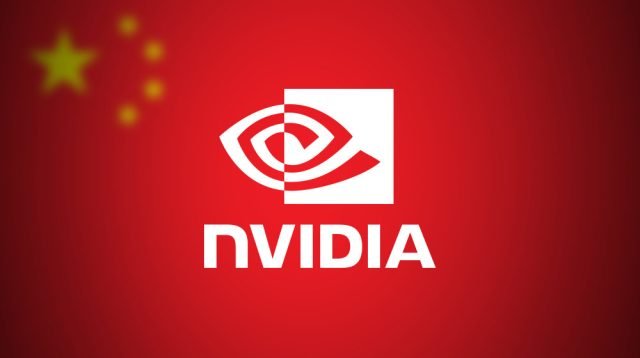AI Insights
AI mania pushes Nvidia to record $4 trillion valuation

Beyond market volatility, Nvidia faces ongoing geopolitical challenges that threaten its access to one of its largest markets. Export controls on Nvidia’s chips designed to keep advanced AI tech out of Chinese hands (that date back to 2022, during the early Biden era) have created a thorny obstacle for the company that it has tried to work around over time with new chip designs, including a special lower-speed chip called the H20.
In April, the Trump administration imposed export restrictions on the H20, which require Nvidia to apply for licenses each time it wants to sell the chip to customers in China, costing the company $5.5 billion in charges and effectively shutting Nvidia out of what CEO Jensen Huang has described as a “$50 billion China market.”
Credit:
Benj Edwards / Nvidia
Simultaneously, Trump has also signaled that he may be willing to ease some restrictions after Nvidia promised the Trump administration new US investments in AI data centers. But the administration’s approach remains unpredictable—Trump has continued to voice his desire for the US to remain an AI leader while trying to keep top tech out of the hands of China, creating a challenging environment for Nvidia to navigate.
Meanwhile, Nvidia’s continued success depends on the continued growth of the AI industry, which some critics consider unsustainable at current levels. Some analysts point to the massive capital expenditures by tech giants on AI infrastructure—with companies like Microsoft, Google, and Meta each spending tens of billions annually on data centers—and question whether the returns will justify the investment.
For now, Nvidia sits atop the tech world as the most valuable company, but whether that position proves sustainable will depend on factors ranging from geopolitical tensions to the question of whether AI applications can actually deliver on the tech industry’s promises.
AI Insights
Smartphone Maker Nothing Raises $200 Million to Build AI Devices

Nothing Technologies Ltd., a smartphone maker founded just five years ago, has raised $200 million to try and develop the next generation of AI-native devices.
Source link
AI Insights
AI Euphoria Could Be Biggest Bubble Yet, Tech Veteran Selby Says

The euphoria around artificial intelligence may have led to the biggest bubble yet in private technology investing, AZ-VC founder and managing partner Jack Selby said, sounding warning bells that a correction in startup valuations is in the cards.
Source link
AI Insights
Opening the black box of machine learning-controlled plasma treatments

Understanding machine learning modifies cold atmospheric plasma medicine delivery in cancer treatments without being trained on detailed plasma parameters.
Although artificial intelligence (AI) can adapt to changing conditions and achieve desired outcomes, how algorithms “understand” and adjust to inputs can be a mystery.
Lin et al. sought to uncover this “black box” in AI-controlled cold atmospheric plasma (CAP) treatments, an approach that induces apoptosis in diseased cells while preserving healthy ones. In previous work, they developed a machine learning (ML) system that predicts the post-treatment state of cancer cell targets and adjusts treatment accordingly. However, they didn’t know how the ML system achieved this outcome without an understanding of specific plasma parameters.
Using an AI-based optical emission spectroscopy (OES) spectra translation algorithm, the authors reverse engineered real-time chemical accumulations above cell medium surfaces. They found that, despite changing conditions, the ML algorithm alters experimental parameters to achieve the same therapeutic outcomes. The application of a Fourier transformation on OES spectra and chemical kinetics analysis revealed how the ML algorithm independently captured additional layers of physics information relying solely on cell viability status, without human input of this information, to achieve the precision and reliability of their AI-controlled CAP model.
“Beyond plasma medicine, similar approaches could advance machine learning-based control in fields like electric propulsion for satellites, plasma-based microfabrication, fusion reactor management, and many other plasma applications” said author Michael Keidar.
Next, the team looks to extend the scope of control that was demonstrated in this paper.
“Instead of limiting the AI to adjusting treatment duration, we plan to authorize and train the AI to control multiple plasma parameters simultaneously, including voltage, gas flow rate, and even additional external electric fields,” said author Li Lin. “In doing so, we aim to tailor therapy to the specific needs of each patient.”
Source: “Low-temperature plasma adaptation in the course of machine learning controls of plasma medicine,” by Li Lin, Qihui Wang, Zichao Hou, Michael Keidar, Physics of Plasmas (2025). The article can be accessed at https://doi.org/10.1063/5.0274614 .
-

 Business3 weeks ago
Business3 weeks agoThe Guardian view on Trump and the Fed: independence is no substitute for accountability | Editorial
-
Tools & Platforms1 month ago
Building Trust in Military AI Starts with Opening the Black Box – War on the Rocks
-

 Ethics & Policy2 months ago
Ethics & Policy2 months agoSDAIA Supports Saudi Arabia’s Leadership in Shaping Global AI Ethics, Policy, and Research – وكالة الأنباء السعودية
-

 Events & Conferences4 months ago
Events & Conferences4 months agoJourney to 1000 models: Scaling Instagram’s recommendation system
-

 Jobs & Careers3 months ago
Jobs & Careers3 months agoMumbai-based Perplexity Alternative Has 60k+ Users Without Funding
-

 Podcasts & Talks2 months ago
Podcasts & Talks2 months agoHappy 4th of July! 🎆 Made with Veo 3 in Gemini
-

 Education3 months ago
Education3 months agoVEX Robotics launches AI-powered classroom robotics system
-

 Education2 months ago
Education2 months agoMacron says UK and France have duty to tackle illegal migration ‘with humanity, solidarity and firmness’ – UK politics live | Politics
-

 Podcasts & Talks2 months ago
Podcasts & Talks2 months agoOpenAI 🤝 @teamganassi
-

 Funding & Business3 months ago
Funding & Business3 months agoKayak and Expedia race to build AI travel agents that turn social posts into itineraries

